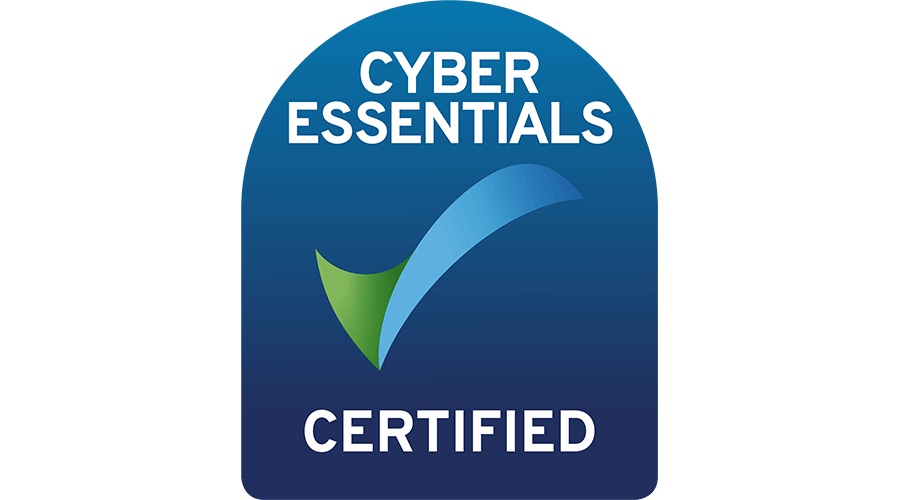Wireless Local Area Networks (WLANs) provide the speed, flexibility, and reliability that modern organisations need to stay competitive. Whether you’re managing an office, a warehouse, or a retail environment, a robust WLAN ensures that your workforce remains productive and connected. But why exactly do businesses need WLAN, and how can professional surveys enhance performance? How can GSM Barcoding help you optimise your network for peak efficiency? Let’s dive in.

Why WLAN is essential for business operations
Implementing a WLAN in your workplace ensures seamless connectivity, enabling businesses to stay competitive and efficient in an increasingly mobile-driven world.
1. Enabling mobility and flexibility
Your employees are no longer confined to desks when they’re working, and businesses must provide the flexibility to access the network from anywhere within the office environment. WLAN empowers your workforce to move freely, whether they’re working in meeting rooms, shared spaces, or even remotely within the premises. This mobility boosts productivity and allows teams to collaborate more effectively without the constraints of wired connections.
2. Supporting multiple devices and IoT integration
The proliferation of smart devices in the workplace—from laptops and smartphones to IoT devices like printers, sensors, and cameras—requires a robust network to handle multiple connections simultaneously. WLAN allows businesses to scale their network to accommodate the growing number of devices without compromising performance. WLAN supports continuous, uninterrupted operations in industries that rely on real-time data from connected devices.
3. Scalability for business growth
WLAN offers the flexibility to scale in response to changing operational demands. Whether you’re opening new offices, increasing staff numbers, or introducing new technologies, WLAN can be easily adjusted to meet your business’s evolving needs. With a scalable network, your business can grow without the costly infrastructure adjustments associated with traditional wired systems.
4. Improved efficiency and cost-effectiveness
The installation and maintenance of wired networks can be time-consuming and expensive. Conversely, WLAN reduces the need for extensive cabling and offers a more cost-effective solution, especially in large office spaces or multi-floor buildings. WLAN allows for easy network upgrades and configuration changes, ensuring your business can adapt quickly to new technologies without expensive overhauls and tearing their workplace apart.
5. Enhanced collaboration and communication
With fast and reliable wireless access, employees can share files, video conference, and collaborate on cloud-based platforms in real-time. This creates a more connected workforce, where communication barriers are reduced, and business processes are streamlined. Whether internal teams work together or client meetings are conducted remotely, WLAN supports smooth communication, driving overall efficiency.
6. Strengthening security with advanced protocols
Modern WLAN systems provide enhanced protection against cyber threats. Advanced encryption protocols, user authentication, and firewall integration ensure that sensitive business data remains secure. With remote monitoring and access controls, IT teams can manage and protect the network more effectively, reducing the risk of data breaches.
7. Enabling cloud integration and digital transformation
Businesses today require networks that can support cloud-based applications, data storage, and real-time analytics. WLAN offers the speed and bandwidth necessary to maintain efficient cloud operations, allowing businesses to leverage the power of the cloud for everything from CRM systems to large-scale data processing.
The benefits of a WLAN tech survey
By performing a WLAN tech survey before implementing your networking solution, you can ensure that your network delivers reliable coverage, high performance, and the capacity to support your business needs. GSM Barcoding can help you to identify the right network setup for your environment.
Identifying coverage gaps and performance issues
Dead zones, interference, and bandwidth congestion caused by inconsistent coverage can impact workflow, slowing down operations and reducing productivity. A WLAN tech survey helps by:
- Mapping coverage areas – Identify weak signal areas and ensure strong, reliable connectivity across your entire site.
- Detecting interference sources – Analysing radio frequency (RF) interference from nearby networks, industrial equipment, and other electronic devices.
- Evaluating bandwidth demands: Ensure your WLAN can support high data loads from multiple connected devices, including handheld scanners, IoT devices, and cloud-based applications.
By proactively identifying these issues, businesses can eliminate bottlenecks and create a WLAN that supports seamless communication and data transfer.
Optimising your WLAN for high-demand environments
Warehousing, logistics, and manufacturing industries rely heavily on real-time data access. Workers depend on wireless barcode scanners, RFID readers, tablets, and automated systems to keep operations running efficiently. A poorly optimised WLAN can cause delays, lost productivity, and operational errors.
A WLAN tech survey helps businesses fine-tune their network for high-demand environments by:
- Ensuring seamless roaming – Workers and automated systems move frequently in large spaces like warehouses. A properly designed WLAN enables devices to switch access points smoothly without losing connectivity.
- Improving network resilience – High-density areas, such as production floors with multiple connected devices, require intelligent network planning to prevent slowdowns and disconnections.
- Future-proofing for growth – A WLAN survey helps design a scalable network that can accommodate future increases in connected devices and data traffic.
How GSM Barcoding helps businesses get the right network setup
GSM Barcoding provides expert solutions to help businesses deploy the most effective wireless infrastructure. Our detailed WLAN tech surveys ensure your network is tailored to your unique operational needs.
- Expert site assessments: Our specialists analyse your facility to design a WLAN that eliminates coverage gaps, maximises performance, and supports all connected devices.
- Customised solutions: Whether you need a network for a multi-site warehouse operation, a fast-paced logistics centre, or a data-intensive manufacturing floor, we design solutions that work specifically for your industry.
- Seamless integration with barcode and RFID systems: If you rely on wireless scanning and tracking technologies, we will ensure that your WLAN fully supports barcode scanners, RFID readers, and inventory management systems without disruption.
The importance of reliable WLAN hardware
Your network is only as strong as the hardware supporting it. Investing in high-quality access points, controllers, and antennas ensures consistent performance, reduces downtime, and enhances overall business efficiency.
How Zebra WLAN solutions enhance business connectivity
Zebra Technologies is a leader in enterprise networking solutions, offering WLAN products designed to optimise business connectivity across various industries. Zebra’s WLAN solutions provide:
- Optimised performance for industrial environments – Designed for warehouses, manufacturing plants, and logistics centres, Zebra’s WLAN hardware ensures seamless roaming, even in challenging conditions.
- Superior device integration – Zebra WLAN solutions work seamlessly with barcode scanners, RFID readers, handheld devices, and IoT technologies, ensuring smooth data collection and transfer.
- High-speed, low-latency connectivity—Businesses relying on real-time data access benefit from Zebra’s advanced WLAN infrastructure, which prioritises critical applications and reduces network congestion.
- Enhanced security – With features like role-based access control, advanced encryption, and remote monitoring, Zebra WLAN solutions keep business networks secure while maintaining fast and reliable connections.
By integrating Zebra’s WLAN technology, businesses gain a smarter, more efficient network infrastructure that supports scalability and high performance.
Future-proofing networks with intelligent wireless solutions
As businesses evolve, so must their WLAN infrastructure. Future-proofing your network means investing in intelligent wireless solutions that adapt to increasing device numbers, higher data loads, and emerging technologies.
- AI-driven network optimisation – Advanced WLAN solutions use machine learning to predict and resolve connectivity issues before they impact operations.
- Cloud-based WLAN management – Cloud-controlled networks allow businesses to remotely manage and scale their network, ensuring optimal performance across multiple locations.
- Wi-Fi 6 and beyond – The latest Wi-Fi standards deliver higher speeds, lower latency, and better device management, ensuring businesses stay ahead.
By adopting intelligent and scalable WLAN solutions, businesses can ensure their network remains reliable, secure, and capable of handling future growth and technological advancements.

RFID & WLAN: Automating inventory tracking
Radiofrequency identification (RFID) technology, when integrated with a strong WLAN infrastructure, allows businesses to automate inventory management, streamline stock control, and reduce human error. Traditional barcode scanning requires line-of-sight and manual scanning, but RFID tags communicate wirelessly with RFID readers, enabling:
Instant, real-time inventory updates – RFID-enabled WLAN networks automatically track stock movements, ensuring businesses always have an accurate view of their inventory.
Reduced manual labour – Employees no longer need to scan individual barcodes manually, saving time and improving efficiency in warehouses, retail stores, and supply chains.
Faster order fulfilment – Businesses can quickly locate stock, improving pick-and-pack accuracy and accelerating order dispatch times.
Minimised stock losses and theft – RFID tracking combined with WLAN alerts businesses to unauthorised movements, preventing inventory shrinkage.
By using RFID and WLAN together, businesses create an automated, high-visibility inventory system that ensures stock levels are always accurate and optimised.
RTLS & WLAN: Real-time tracking of assets and personnel
Real-time location systems (RTLS) leverage WLAN to track the movement of assets, equipment, and personnel in real time. This technology is crucial for businesses operating in large, dynamic environments, such as:
- Warehouses and logistics hubs – RTLS enables businesses to track forklifts, shipping containers, and high-value assets, reducing misplacement and improving efficiency.
- Manufacturing plants – RTLS helps monitor machine usage, maintenance schedules, and workflow efficiency, ensuring smooth operations.
- Hospitals and healthcare – Medical facilities use RTLS to locate critical equipment, such as ventilators and wheelchairs, and track personnel in high-risk areas.
- Workforce safety and compliance – Businesses can monitor employee movement in hazardous zones or restricted areas, improving safety compliance and emergency response times.
Intelligent edge solutions: How WLAN enables smart business workflows
The intelligent edge refers to computing processes that happen closer to where data is generated rather than in a centralised cloud. WLAN supports intelligent edge solutions by enabling instant data processing, automation, and AI-driven decision-making at the source.
- Faster data insights – Intelligent edge devices (such as IoT sensors, smart cameras, and automated machines) can process data locally using WLAN, reducing latency and enabling real-time decision-making.
- Enhanced automation – Smart workflows in manufacturing, logistics, and retail rely on WLAN to enable automated picking systems, self-checkout terminals, and robotic process automation (RPA).
- Reduced network congestion – Instead of sending all data to the cloud, WLAN-powered edge computing allows devices to communicate directly, reducing bandwidth strain and improving network efficiency.
- Improved customer experiences – In retail, WLAN supports AI-driven customer analytics, intelligent inventory management, and personalised shopping experiences based on real-time data.
Ensure your business has the right WLAN infrastructure. Begin with a wireless site survey from GSM Barcoding to optimise your network for efficiency and scalability.


















